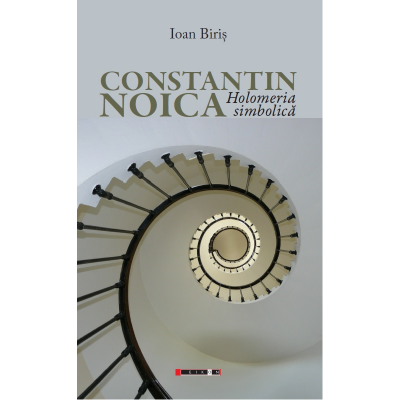F.F. Coppola and Mircea Eliade - Youth without youth | Cristina Scarlat

Detalii F.F. Coppola and Mircea Eliade
F.F. Coppola and Mircea Eliade - Disponibil la carturesti.ro
Pe YEO găsești F.F. Coppola and Mircea Eliade de la Eikon, în categoria Carte straina.
Indiferent de nevoile tale, F.F. Coppola and Mircea Eliade - Youth without youth | Cristina Scarlat din categoria Carte straina îți poate aduce un echilibru perfect între calitate și preț, cu avantaje practice și moderne.
Caracteristici și Avantaje ale produsului F.F. Coppola and Mircea Eliade
- Departament: gaming-carti-birotica
- Ideal pentru pasionații de jocuri, birotică și distracție online.
Preț: 25 Lei
Caracteristicile produsului F.F. Coppola and Mircea Eliade
- Brand: Eikon
- Categoria: Carte straina
- Magazin: carturesti.ro
- Ultima actualizare: 27-10-2025 01:24:43
Comandă F.F. Coppola and Mircea Eliade Online, Simplu și Rapid
Prin intermediul platformei YEO, poți comanda F.F. Coppola and Mircea Eliade de la carturesti.ro rapid și în siguranță. Bucură-te de o experiență de cumpărături online optimizată și descoperă cele mai bune oferte actualizate constant.
Descriere magazin:
F.F. Coppola and Mircea Eliade - Cristina Scarlat, editura Eikon: If I have the gift of prophecy and can fathom all mysteries and all knowledge, and if I have a faith that can move mountains, but do not have love, I am nothing. (St. Paul’s “Th e first epistle to the Corinthians”). This is the guiding thread of both, the text and the movie, the key and the measure of the whole.Dominic lives the Christian experience, death and resurrection. Struck by thunder the lead character evolves in the eternal present of Resurrection and remains in history at the same time. Th e final return to the time and history from which he “broke off ” at the moment of the accident represents the return home to die. Dominic’s into becoming signifies the improvement or the retouch of some destiny loops, his growing into a spiritual human being, his work being the very human being improved, evolved and superior after the initiatory experience caused by the accident. It is the Prince Charming from our folk tales who, after a series of initiatory experiences that positioned him on “the way” in order to build his own path, returns to the “womb“ improved and discharmed. Cristina ScarlatThe entire film swings through the possibilities offered to us through study and research, only to confess that without love (eros), or compassion (agape/bhakti), you’re as good as dead anyway (cf. Cor. 13, 2). And perhaps it was this idea that drew me to Eliade and Coppola more than anything.Cristina Scarlat’s work is the ideal guide to the interface between Eliade, Coppola and the reader or viewer of this complex story. Here is a work nourished by dedicated passion, painstaking erudition and balanced judgment. I cannot refrain from indicating the high points of this brief but dense essay. These are the theoretical discussion of semiotics of arts/media and intertextuality, the reconstruction of the interplay between the narrator Eliade and the filmmaker Coppola (who most oft en speaks in first person), the vast (quasi exhaustive) survey of the critical reception in the (French, Italian, Romanian, American) press and in academic scholarship (Ricketts, Kripal, Biles, Garzilli, Calinescu, Simion, Groza, Glodeanu), not to mention a series of personal vivid and convincing interpretations and explanations, especially frequent in the final part. I cannot but share the conclusive remark (quite similar to my own conclusion in an interview given to “Mama Studio”): “Finally, the meaning of the text may be recovered starting backwards from its cinematographic transposition.” - Professor Giovanni Casadio History of Religions Department, University of Salerno, Italy

Produse asemănătoare
Produse marca Eikon

Mirrors of contemporary life - Television series - Ligia TOMOIAGA
![]() grupdzc.ro
grupdzc.ro
Actualizat in 28/10/2025
22.42 Lei

Destinul unui anonim - Mihai (Balint) Papp, Maria Metco
![]() grupdzc.ro
grupdzc.ro
Actualizat in 28/10/2025
19.22 Lei



